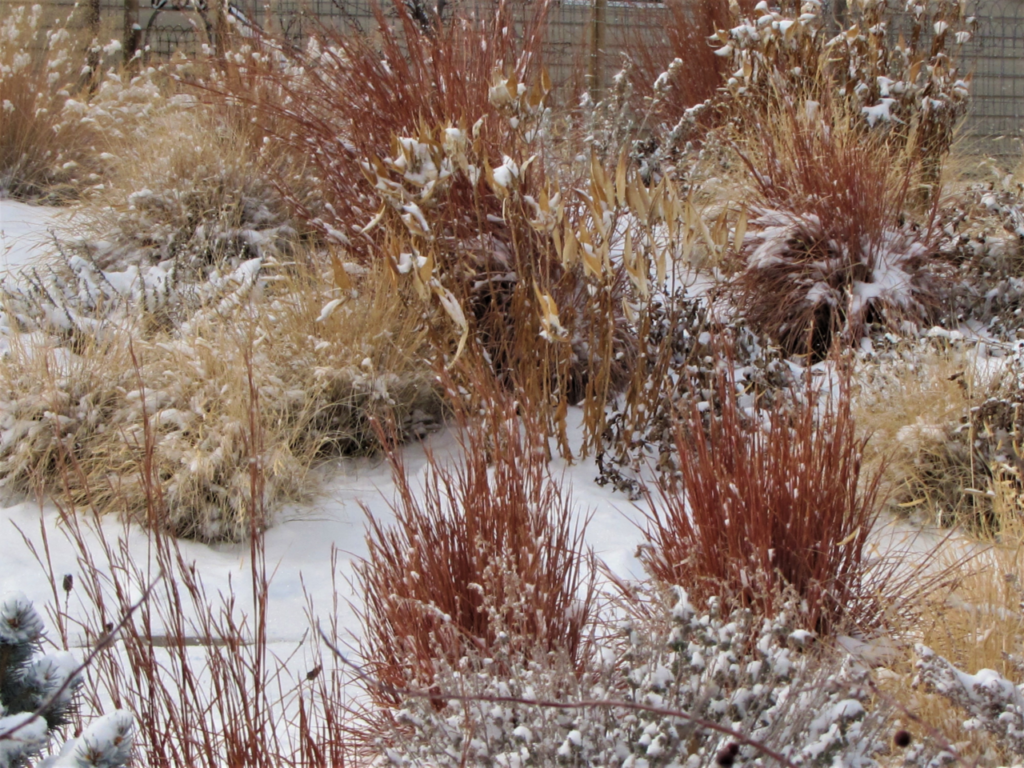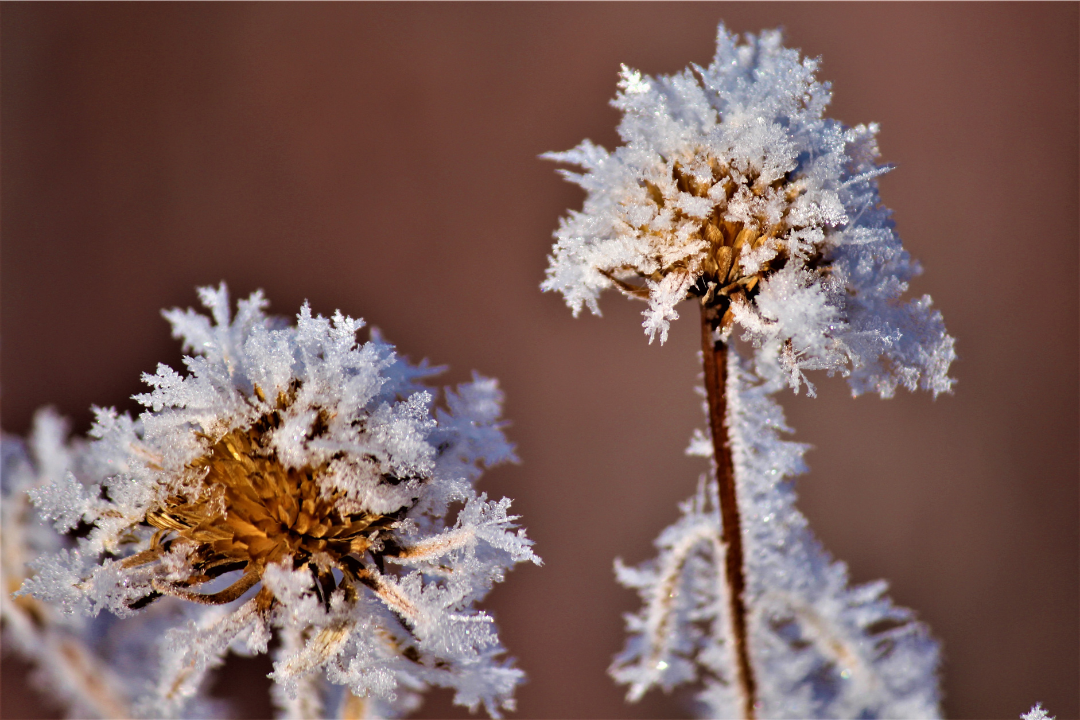As the leaves accumulate in your landscape, it can be tempting to stuff them into trash bags and take them to the dump. While it’s not advised to leave them on the grass (they’ll create dead spots, snow mold and other issues), experts recommend that you “leave the leaves” among your shrubs and perennial plants.
The less you do to your landscape in the fall the better, says Jim Tolstrup, executive director of the High Plains Environmental Center in Centerra. He’s managed a large swath of native plants in the area for more than 18 years and works to protect pollinators and wildlife through sustainable horticulture. Fall leaves are nature’s mulch, he says, and he finds it bizarre that people remove them from their landscape only to buy shredded cedar mulch that was trucked in from the West Coast.
“Leaves nestled among your plants are going to help keep things going through the fall,” he says. “Letting the leaves decompose acts as a mulch and fertilizes the plants because as it breaks down, the nutrients go back into the soil.”

Photos courtesy of High Plains Environmental Center.
Mulch helps perennials and shrubs survive the winter because it helps to insulate them against Northern Colorado’s freeze-thaw cycles. When it’s freezing one day, 65° F the next, then back down to the teens the day after, plants are more likely to struggle than if the ground froze and was covered in snow until spring, Tolstrup says.
Tucking fallen leaves around the base of your plants helps to keep them from freezing and thawing, but so does leaving their old growth from the summer. Tolstrup advises against cutting perennials back for several reasons:
- Old foliage covers the base of the plant. Seed heads and dead foliage shade the ground so that plants are less likely to freeze and thaw. This helps plants survive the winter.
- Beneficial insects live inside old foliage. Some plants have hollow stems that pollinators and other beneficial insects will seek cover in until spring. Some species, like bees, also make shallow holes in the ground beneath fallen leaves. Cutting back perennials and removing dead leaves eliminates beneficial insects from your yard, which are essential for plant health and a thriving ecosystem all year round.
- Birds depend on seeds in the winter. Birds pick at the heads of old sunflowers, echinacea, black-eyed Susans and similar perennials that provide essential food for them in the fall and winter. These seeds are much more nutrient dense and dispersed than store-bought seeds, which can spread disease in bird feeders and get the attention of Cooper’s hawks and other predators that hunt smaller birds.
- Uncut perennials make beautiful dried flower arrangements. When perennials are left alone in the fall, they create natural dried flower arrangements in the winter landscape. Whereas old foliage turns to mush and rots in other parts of the country, here it freeze dries in place. Showy grasses with golden foliage and tall seed heads are especially known for their winter interest, which is lost when they are cut back in the fall.
For those who prefer a more manicured landscape, Tolstrup suggests cleaning up some areas and leaving other areas wild. The parts that are left alone shouldn’t even be walked through because the pollinators overwintering there could get crushed.
“You might not get 100 percent of your landscape that’s native and supporting biodiversity, but part of it is,” Tolstrup says. “The insects that emerge there will go to the other parts of your garden and to other gardens and so on. People think there’s a hive under the ground, but [the bees] are just emerging from eggs.”
So when should you cut perennials back and clean up your landscape? A good rule of thumb is to wait until you see bumblebees flying around, Tolstrup says. That’s usually later than the conventional standards for garden cleanup, but any sooner would defeat the purpose of leaving the leaves and old foliage in your landscape all winter long.
If you’re itching to get out in the garden during the colder months, some shrubs can benefit from regenerative pruning in the fall. Sumac and native rabbit brush are two examples that can be cut back significantly, Tolstrup says, though other shrubs, like lilacs and roses, have specific pruning requirements. Perennials and shrubs should also be watered once per month in the fall and winter (especially new plantings) since this time of year is typically very dry.
Still, native plants are much tougher and have a greater chance of surviving the cold than non-native nursery stock, Tolstrup says. That’s why he recommends planting more of them.
“I really can’t say enough about native plants because they evolved in this ecosystem,” he says. “They’re adapted to our bright sun, high winds and low moisture. Fortunately, we are very slowly navigating toward using more native plants, but it’s just the tip of the iceberg at this point.”







